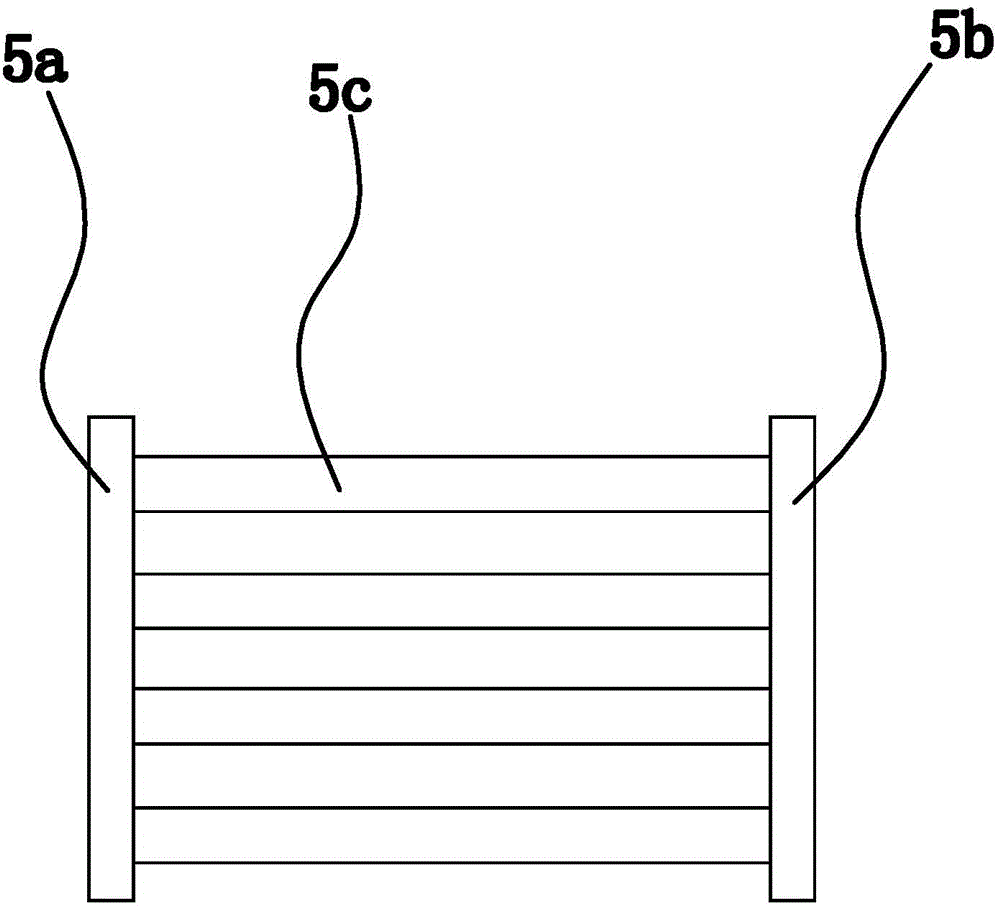Fabric dyeing process and dye jar for same
A fabric and process technology, applied in the direction of dyeing method, textile material processing, continuous processing of textile materials, etc., can solve the problems of reducing dyeing quality, fabric winding, and cloth guide rollers not fully functioning as cloth guides, so as to improve the Dyeing stability, the effect of improving work stability
- Summary
- Abstract
- Description
- Claims
- Application Information
AI Technical Summary
Problems solved by technology
Method used
Image
Examples
Embodiment 1
[0054] The dyeing process of this fabric includes the following steps:
[0055] A. Preparation of lotion: inject water and degreasing agent into the dyeing vat at a mass ratio of 1000:0.3 and mix to obtain washing water. In this embodiment, the water is purified river water; according to actual conditions, it is also feasible to directly use tap water.
[0056] In addition, the degreaser is sodium tripolyphosphate. According to the actual situation, it is also feasible to use fatty alcohol polyoxyethylene ether as the degreasing agent.
[0057] B. Cloth washing: Put the fabric to be dyed into the dyeing vat, wash the fabric for 20 minutes, and obtain the fabric to be dyed after washing.
[0058] C. Dyeing: After draining the washing water in the dyeing vat, inject the dyeing solution into the dyeing vat, and take out the fabric to be dyed from the dyeing vat after 3 hours to obtain a semi-finished fabric.
[0059] In this embodiment, a color-fixing agent is added to the dye...
Embodiment 2
[0071] The dyeing process of this fabric includes the following steps:
[0072] A. Preparation of lotion: inject water and degreasing agent into the dye vat at a mass ratio of 1000:0.6 and mix to obtain washing water. In this embodiment, the water is purified river water; according to actual conditions, it is also feasible to directly use tap water.
[0073] In addition, the degreaser is sodium tripolyphosphate. According to the actual situation, it is also feasible to use fatty alcohol polyoxyethylene ether as the degreasing agent.
[0074] B. Cloth washing: Put the fabric to be dyed into the dyeing vat, wash the fabric for 40 minutes, and get the fabric to be dyed after washing.
[0075] C. Dyeing: After draining the washing water in the dyeing vat, inject the dyeing solution into the dyeing vat, and take out the fabric to be dyed from the dyeing vat after 5 hours to obtain a semi-finished fabric.
[0076] In this embodiment, a color-fixing agent is added to the dyeing so...
Embodiment 3
[0080] The dyeing process of this fabric includes the following steps:
[0081] A. Preparation of lotion: inject water and degreasing agent into the dyeing vat at a mass ratio of 1000:0.5 and mix to obtain washing water. In this embodiment, the water is purified river water; according to actual conditions, it is also feasible to directly use tap water.
[0082] In addition, the degreaser is sodium tripolyphosphate. According to the actual situation, it is also feasible to use fatty alcohol polyoxyethylene ether as the degreasing agent.
[0083] B. Cloth washing: Put the fabric to be dyed into the dyeing vat, wash the fabric for 30 minutes, and get the fabric to be dyed after washing.
[0084] C. Dyeing: After draining the washing water in the dyeing vat, inject the dyeing solution into the dyeing vat, and take out the fabric to be dyed from the dyeing vat after 3-5 hours to obtain a semi-finished fabric.
[0085] In this embodiment, a color-fixing agent is added to the dyei...
PUM
 Login to View More
Login to View More Abstract
Description
Claims
Application Information
 Login to View More
Login to View More - R&D
- Intellectual Property
- Life Sciences
- Materials
- Tech Scout
- Unparalleled Data Quality
- Higher Quality Content
- 60% Fewer Hallucinations
Browse by: Latest US Patents, China's latest patents, Technical Efficacy Thesaurus, Application Domain, Technology Topic, Popular Technical Reports.
© 2025 PatSnap. All rights reserved.Legal|Privacy policy|Modern Slavery Act Transparency Statement|Sitemap|About US| Contact US: help@patsnap.com



